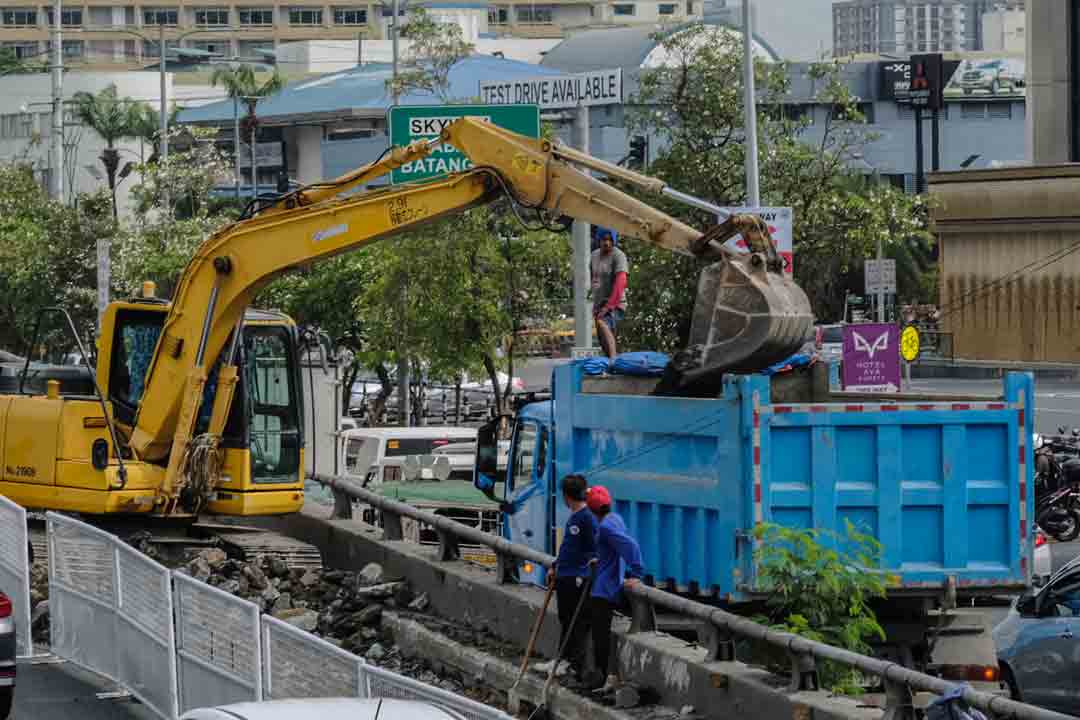Infrastructure spending rises 27% in Feb.

Beatriz Marie D. Cruz, Reporter
INFRASTRUCTURE spending jumped by 27% in February as the government ramped up road and defense modernization projects, the Department of Budget and Management (DBM) said.
In the latest National Government (NG) disbursement report, infrastructure and other capital outlays rose by 26.6% or P16.7 billion to P79.4 billion in February from P62.7 billion in the same month a year ago.
Month on month, infrastructure spending nearly doubled from P41.1 billion.
For the first two months of the year, infrastructure spending went up by 6.7% to P120.5 billion from P113 billion in the same period a year ago.
The DBM attributed the increased spending to higher disbursements by the Department of Public Works and Highways (DPWH) for road infrastructure projects, and the Department of National Defense (DND) for the defense modernization program.
“The DPWH credited its strong spending performance to their expeditious processing and payment of accounts payables; payment of mobilization fees/advances to contractors for projects under the fiscal year 2024 General Appropriations Act,” the DBM said.
The DPWH has also fast-tracked the implementation and completion of carryover projects, and increased monitoring of project accomplishments, the Budget department said.
However, the DBM said infrastructure spending growth in the first two months was tempered by lower cash receipts in February. In February 2023, the Asian Development Bank made direct payments worth P10.1 billion for the Department of Transportation’s (DoTr) South Commuter Railway Project 1.
In the first two months, overall infrastructure disbursements rose by 5.3% to P153.4 billion from P145.6 billion a year ago.
Terry L. Ridon, a public investment analyst and convenor of think tank InfraWatch PH, said faster infrastructure spending in February was due to improved efficiency in budget disbursement and utilization.
“The rise in infrastructure spending can be attributed to improved processes in fund disbursements and utilization by various agencies, such as the DBM and implementing agencies like the Public Works and Transportation departments,” he said in a Viber message.
Ruben Carlo O. Asuncion, chief economist at Union Bank of the Philippines, Inc., said it is a good sign that the government is spending, particularly on infrastructure.
“Frontloading of spending is expected… The government tries to get all projects going to take advantage of the start of the year and the general dry season,” he said in a Viber message.
“Nevertheless, it is worthwhile because infrastructure spending has substantial multiplier effects for incomes across the board.”
Infrastructure outlays under the national budget increased to P1.51 trillion this year from P1.33 trillion last year.
“Spending for the year will continue to be underpinned by sizable investments in both public infrastructures and social sector programs acting as fiscal stimulus to help shore up economic growth and secure gains from poverty reduction initiatives,” the DBM said.
Mr. Ridon said the Marcos administration is expected to continue ramping up infrastructure spending.
“We are expecting further improvements in budget utilization, given that the administration will be reaching its midterm by 2025 and the public is looking forward to more meaningful services, facilities and infrastructure in the coming months,” he said.
The Marcos administration plans to spend at least 5-6% of gross domestic product (GDP) on infrastructure annually from 2024 to 2028, under the medium-term fiscal framework.
